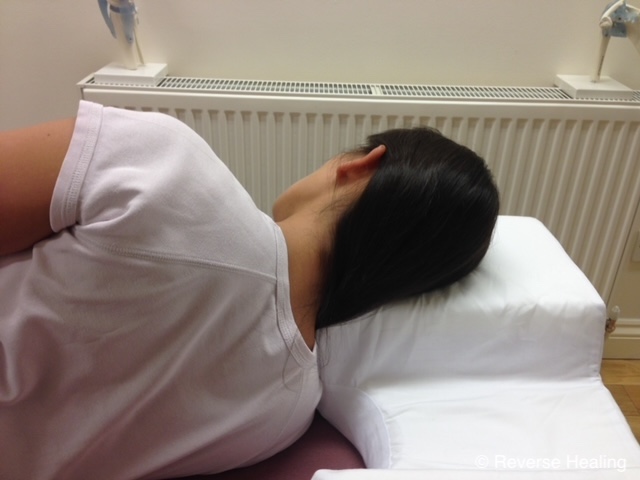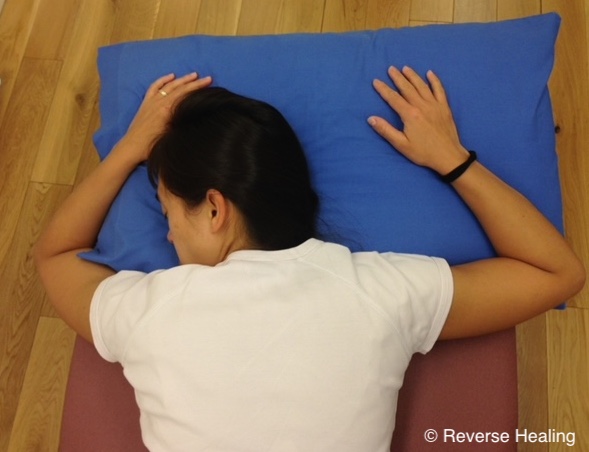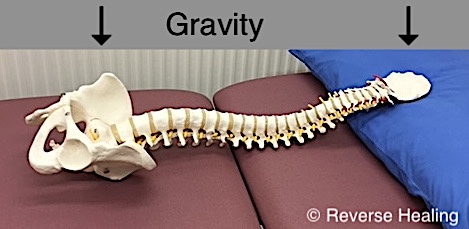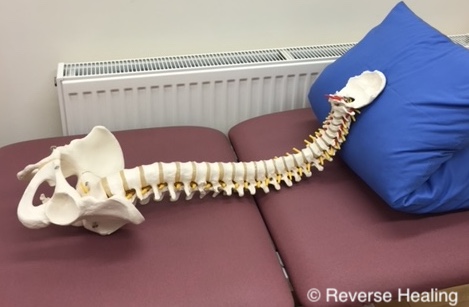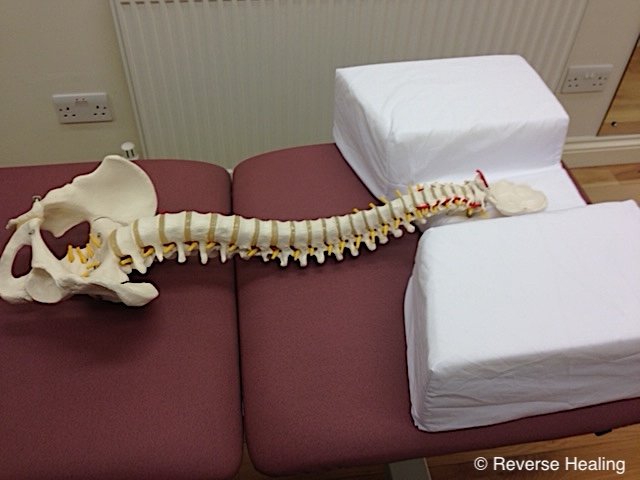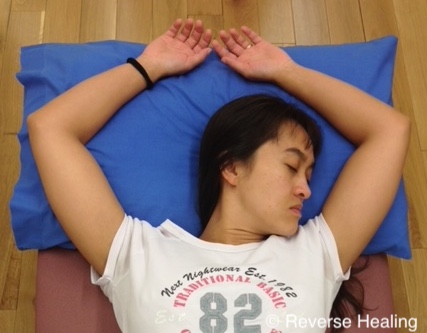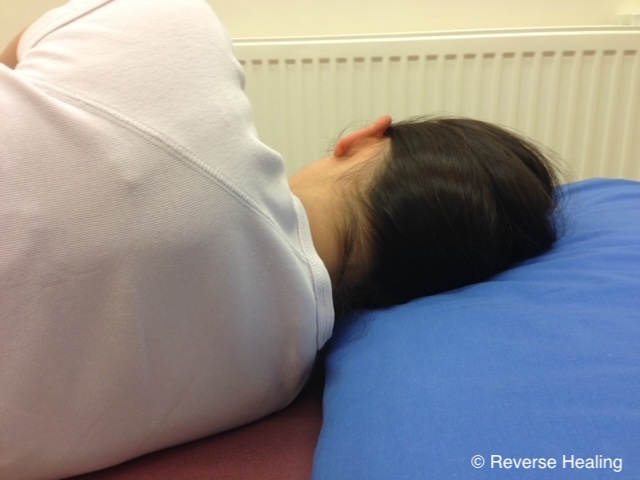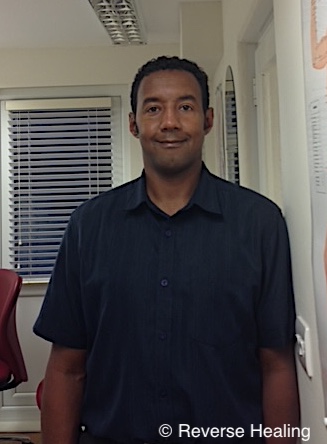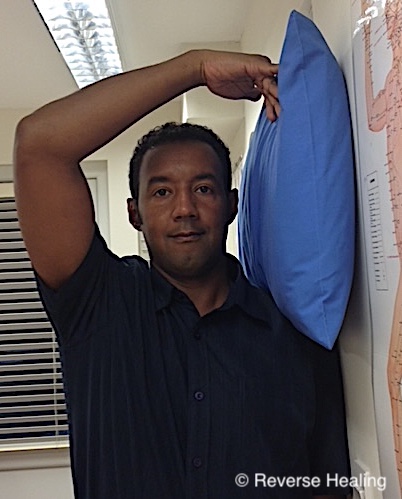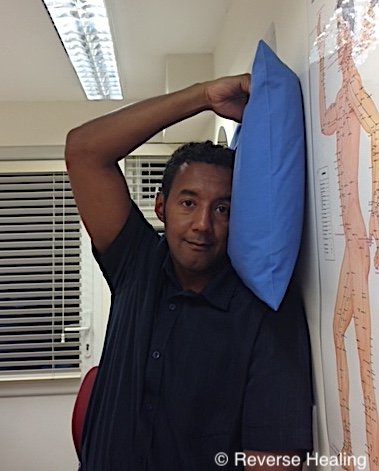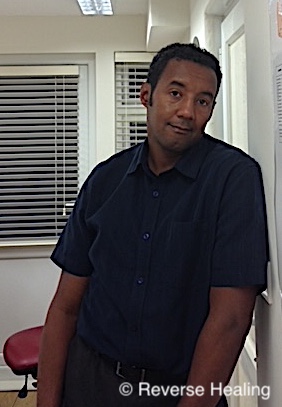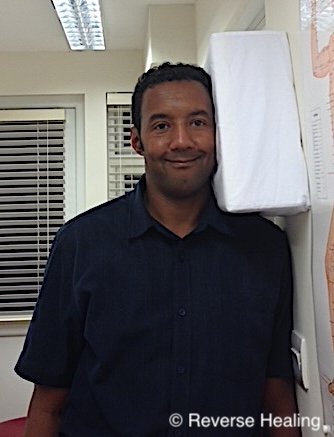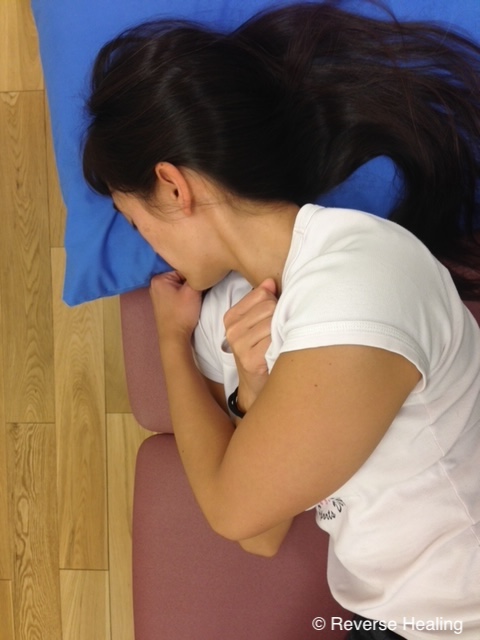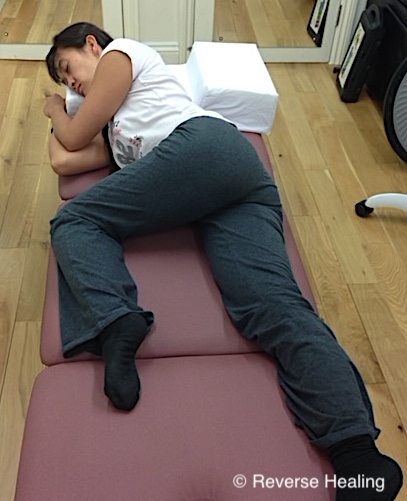
3D Pillow
Correct your posture while you sleep.
Available at the Practice
£60
Medium foam base and memory foam top layer. Cover 100% jersey cotton. Non removable, non washable. Comes with a free pillowcase.

Pillowcase
Specifically designed for the 3D Pillow.
Available at the Practice
£10
100% cotton. Fabric colour may vary from image as it is natural cotton and will appear off- white or cream. Removable, machine washable.
Izzel Barbosa created the 3D Pillow with three distinct sections to give you optimal support when sleeping on your back and your side *.
THE 3D PILLOW
- ✔ Provides optimal and specific support for sleeping on your back and sleeping on your side
- ✔ Repositions your head, neck and shoulders while you sleep
- ✔ Relengthens your neck and shoulder muscles
- ✔ Reduces neck and shoulders strain as well as stiffness
- ✔ Reduces numbness in the arms
- ✔ Reduces the incidence of nerve trapping
- - Health Warning -
- If you have any severe neck problems or severe spinal issues you should seek help before using the 3D Pillow.
- If you need to discuss medical issues before purchasing please contact Izzel. He will advise you accordingly.
* Sleeping on your front is not recommended. Find out why in our 'Sleeping Advice' and 'FAQs' sections below.
- Placing the 3D Pillow on your Bed
- Lying on your Back
- Lying on your Side
- Moving from Section to Section
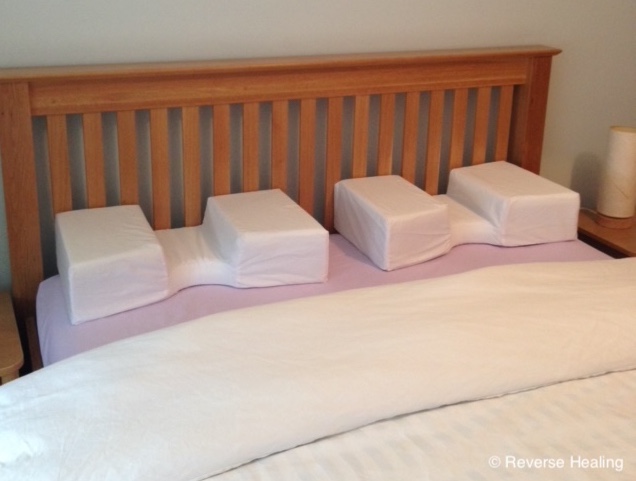 Place the 3D Pillow against a headboard or a wall to stabilise it.
Place the 3D Pillow against a headboard or a wall to stabilise it.
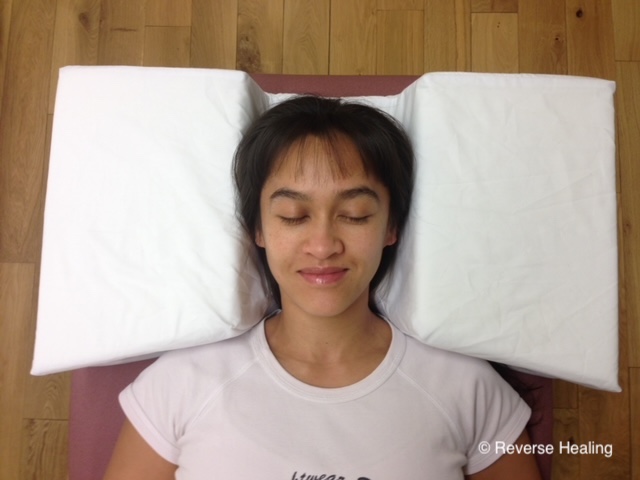 When lying on your back, rest your head on the middle section and make sure the angled sections of the 3D Pillow are in contact with your shoulders.
When lying on your back, rest your head on the middle section and make sure the angled sections of the 3D Pillow are in contact with your shoulders.
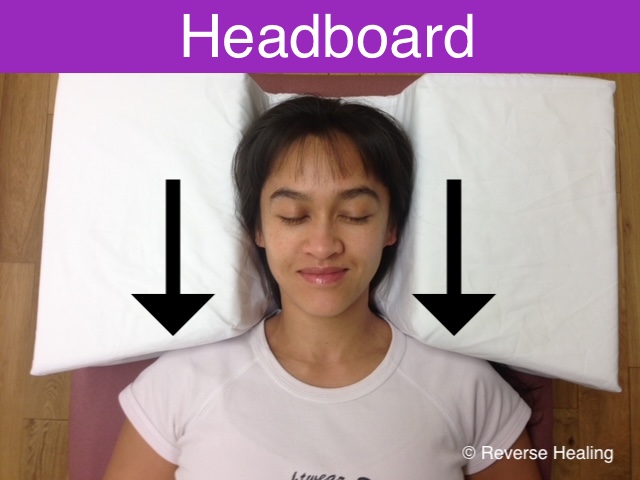 Placing the 3D Pillow against a headboard and keeping your shoulders in contact will enable the 3D Pillow to gently stretch your shoulders down while you sleep.
Placing the 3D Pillow against a headboard and keeping your shoulders in contact will enable the 3D Pillow to gently stretch your shoulders down while you sleep.
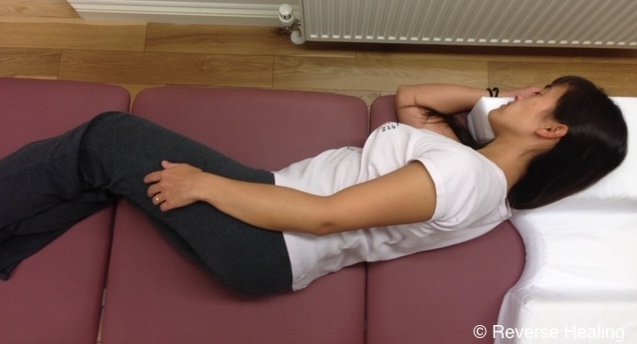 When lying on your side, rest your head on the right section if you sleep on your right side. Rest your head on the left section if you sleep on your left side.
When lying on your side, rest your head on the right section if you sleep on your right side. Rest your head on the left section if you sleep on your left side.
To move from one section to another, turn your hips on the spot and move your head to the relevant section.
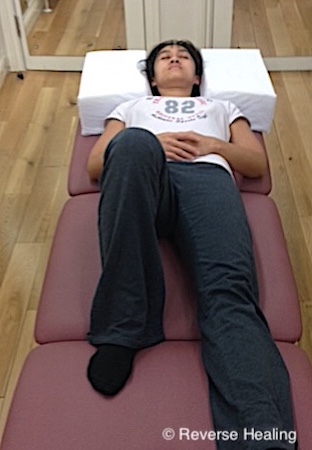
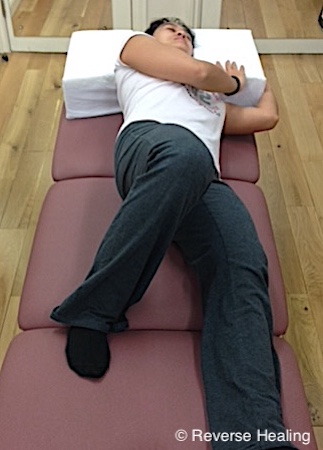
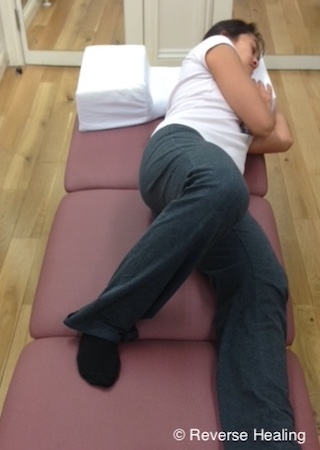
BACK SLEEPER
⚋ Sleeping on your back is the master position for posture correction ⚋
When lying on your back, gravity pulls your head and shoulders down and straightens your spine back into the correct 'S' shape.
How to reduce tensions when back sleeping:
If your pillow is too thick, your head will be elevated and this will result in a hunched back.
- ✘ Turning your head will cause shortening in your neck (stiff neck)
- ✘ Raising your shoulders will cause shortening above your shoulders (stiff neck and shoulders)
- ✘ Raising your arms will cause trapped nerves and blood vessels (numbness, pins and needles)
SIDE SLEEPER
⚋ Side sleeping is a secondary position ⚋
It helps move the blood around the body and avoid pressure soreness on the skin.
It is not a posture corrective position as gravity does not restore the 'S' shape of your spine when lying on your side.
How to reduce tensions when side sleeping:
If your head is not at the right height, your neck will side bend and strain (stiff neck).
Ordinary pillows do not take into account the head-to-shoulder gap, which means your body has to compensate when side sleeping.
The shoulder you rest on will pull forward as a result.
If the shoulder you rest on is pulled forward, circulation to your arm will be cut (numbness, pins and needles).
The 3D Pillow takes into account the head-to-shoulder gap.
It maintains you in the correct position when you sleep on your side.If your top arm leans forward, your shoulder will round forward and strain (stiff neck and shoulder muscles).
If you sleep in the recovery position, your spine will twist and you will strain your lower back and your neck.
Resting your legs on top of each other keeps your spine in the correct alignment. Place a cushion between the knees for additional comfort.
FRONT SLEEPER
⚋ Front sleeping is to be avoided ⚋
Sleeping on your front is not recommended because it is impossible to retain the 'S' shape (neutral position) of the spine.
- ✘ Your head needs to turn to allow you to breathe (stiff neck)
- ✘ Your arms are lifted and your shoulders are rounded forward, reducing circulation (numbness, pins and needles in the arms)
- ✘ Your lower back is arching (lower back ache)
It is therefore impossible to maintain your neck and shoulders in the correct neutral position.
People who sleep on their front always consult physiotherapists, osteopaths and chiropractors for various neck, shoulder and middle back problems.
The 3D Pillow has been designed to optimise good sleeping postures and therefore does not cater for front sleepers.
If you are a front sleeper check our recommendation in the 'FAQs' section below.
Sleeping on your front is to be avoided because it is impossible to maintain your neck and shoulders in the correct neutral position.
When sleeping on your front, you have to turn your head to one side to breathe. People who sleep on their front always consult physiotherapists, ostheopaths and chiropractors for various neck, shoulders and middle back problems.
Sleeping on your front is not recommended because it is impossible to maintain the correct alignment of your neck and breathe at the same time. The 3D Pillow does not cater for sleeping on your front.
Instead, we recommend you initially sleep on your side (on either side section of the 3D Pillow) as it is less of a shock for you than sleeping on your back and you will greatly reduce the strain on your neck, shoulders and middle back.
Moving on the 3D Pillow is very easy. Your hips pivot on the spot as they normally do when moving in bed and your head simply moves from one section to the other. It is very intuitive.
Check the 'How to Use' section above for an illustration.
If you want to wake up in the morning feeling that your neck and shoulders are relaxed, lengthened and realigned; if you want to wake up without aches and stiffness or numbness and pins and needles in your arms, then the 3D Pillow is for you.
The 3D Pillow will assist you in maintaining the correct positions because of its very unique shape that restricts your ability to get into straining positions.
You will subconsciously adjust your body on it while sleeping to achieve the most comfortable position.
The 3D Pillow primarily controls the position of your head in relation to your spine and shoulders. This is achieved by the deeper layers of firmer foam that prevent the head from sinking in too deep and also by the specific height of each section of the pillow.
The neck is supported by the superficial layers of memory foam that give under the weight of the head (heavier) and mould around the neck (lighter). This allows the pillow to mould itself to the unique shape of your head and neck, and give you a personalised and optimal support.
Most pillows on the market offer one standard height for all the sleeping positions, even though each sleeping position has unique height requirements.
The 3D Pillow has a lower middle section for sleeping on your back and two higher side sections for sleeping on your side, so your head is always at the right height during the night.
Most pillows on the market have a ridge designed to support the neck that often ends up adding more pressure instead.
The surface of the 3D Pillow is flat and your neck is supported by the memory foam that moulds around it, offering a tailored and subtle support.
Yes, although sleeping on your back might be uncomfortable at first.
We would recommend you practise lying on a carpeted floor or a firm mat with your head resting on a 2 inch book (covered with a towel) and with your knees bent (feet on the floor) for 5 minutes once a day to slowly stretch your spine into a straighter 'S' shape.
In the meantime, you can sleep on your side using the side sections until you gain flexiblity to sleep comfortably on your back.
Few sessions with Izzel could assist you in speeding up this process. Contact us if you have any queries, require medical advice or need treatments.
We would recommend memory foam mattresses that are made of a blend of memory foam (3 to 4 inches) superficially and firmer foam at the bottom.
The other alternative is a firmer mattress with a memory foam topper on it.
Memory foam always works better when supported by firmer foam. These two options mirror the foam blend of the 3D Pillow for optimal balance between support and comfort.
Yes, you can try the 3D Pillow for free at our physio practice in West Molesey. There is a sample available to try when patients come for treatment.

